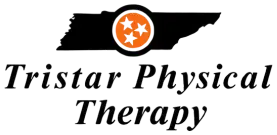Table of Contents
Shoulder pain and injuries, such as rotator cuff tears, can significantly impact your daily life, making simple tasks like brushing your hair or putting on a belt challenging. Additionally, shoulder pain can disrupt your sleep pattern, causing further discomfort and frustration. In such cases, seeking physical therapy can be beneficial in helping you regain normal shoulder function and alleviate pain.
Goals of Physical Therapy for Shoulder Pain
Physical therapy aims to address various aspects of shoulder pain and dysfunction. Some common goals of physical therapy for shoulder pain include:
- Decreasing pain: The primary objective of physical therapy is to reduce pain in the shoulder and arm. Therapists use various techniques and exercises to alleviate discomfort and promote healing.
- Improving shoulder strength: Strengthening the shoulder muscles is crucial for restoring normal function. Physical therapists employ specific exercises tailored to your condition to improve shoulder strength effectively.
- Enhancing range of motion (ROM): Conditions like frozen shoulder, rotator cuff tendonitis, or shoulder surgery can lead to a significant loss of shoulder mobility. Physical therapy focuses on improving ROM through manual stretching and targeted exercises.
- Maintaining proper posture: Correct posture is essential for optimal shoulder function and preventing further injuries. Physical therapists provide guidance on maintaining proper posture during daily activities to support shoulder health.
- Regaining normal arm function: Ultimately, the goal of physical therapy is to restore your arm’s full functionality, allowing you to perform daily tasks without limitations or pain.
Common Treatments for Shoulder Problems
While various treatment modalities are available for shoulder problems, exercise has been proven to be the most effective method for improving arm function and reducing pain. Physical therapists may incorporate other treatments like ultrasound or electrical stimulation to complement exercise therapy. However, the primary focus remains on targeted exercises.
Conditions Leading to Loss of Range of Motion
Several conditions can result in a significant loss of range of motion in the shoulder. These may include:
- Frozen shoulder
- Rotator cuff tendonitis
- Shoulder surgery
- Cervical radiculopathy or a pinched nerve
- Proximal humeral fracture
If you experience a loss of range of motion in your shoulder, it is important to consult your healthcare provider and physical therapist to determine the appropriate treatment for your specific condition.
Techniques and Exercises to Improve Mobility
When addressing shoulder mobility issues, physical therapists employ various techniques and exercises. Manual stretching is one such technique used to improve range of motion. Your physical therapist may gently stretch your shoulder in different directions to enhance mobility. Additionally, exercises like the towel shoulder stretch can be prescribed to work on improving range of motion.
Shoulder Pulleys for Range of Motion Improvement
Shoulder pulleys, commonly used in physical therapy, are effective tools for improving range of motion in the shoulder. These pulleys consist of an apparatus that is hooked over the top of a door, equipped with a small pulley system near the top and a rope with handles hanging down. By utilizing shoulder pulleys, you can perform a variety of exercises that target different directions of shoulder movement, ultimately improving shoulder mobility and function.
Your physical therapist will provide instructions on the proper techniques to use with shoulder pulleys, ensuring safe and effective usage. It is important to follow their guidance closely, as aggressive range of motion exercises too soon after surgery can lead to further shoulder damage and delay healing. If you have any concerns about the safety of shoulder ROM exercises, consult your healthcare provider and physical therapist for guidance.
If your physical therapist determines that home-use of shoulder pulleys would benefit your shoulder rehabilitation, you may consider purchasing a set. These sets are readily available at many sporting goods stores. Alternatively, you can easily create your own shoulder pulley set using simple items from your local hardware or home improvement store.
Advancing Exercises for Shoulder Rehabilitation
As your shoulder mobility and strength improve, your physical therapist may prescribe more advanced exercises. Typically, the progression from shoulder pulley ROM exercises involves transitioning to active range of motion exercises and eventually incorporating shoulder strengthening exercises. It is essential to work closely with your healthcare provider and physical therapist to ensure that the exercises you perform are appropriate for your specific condition and stage of rehabilitation.
Conclusion
Shoulder pain and injuries can significantly impact your daily life and hinder your ability to work or engage in recreational activities. Seeking physical therapy, specifically for rotator cuff physical therapy, can help address shoulder pain, improve range of motion, and restore normal shoulder function. Utilizing tools like shoulder pulleys, under the guidance of a physical therapist, can effectively improve shoulder mobility and contribute to a successful rehabilitation process. If you are experiencing shoulder pain or have had shoulder surgery, consult with a healthcare provider and consider physical therapy as an integral part of your recovery journey.

